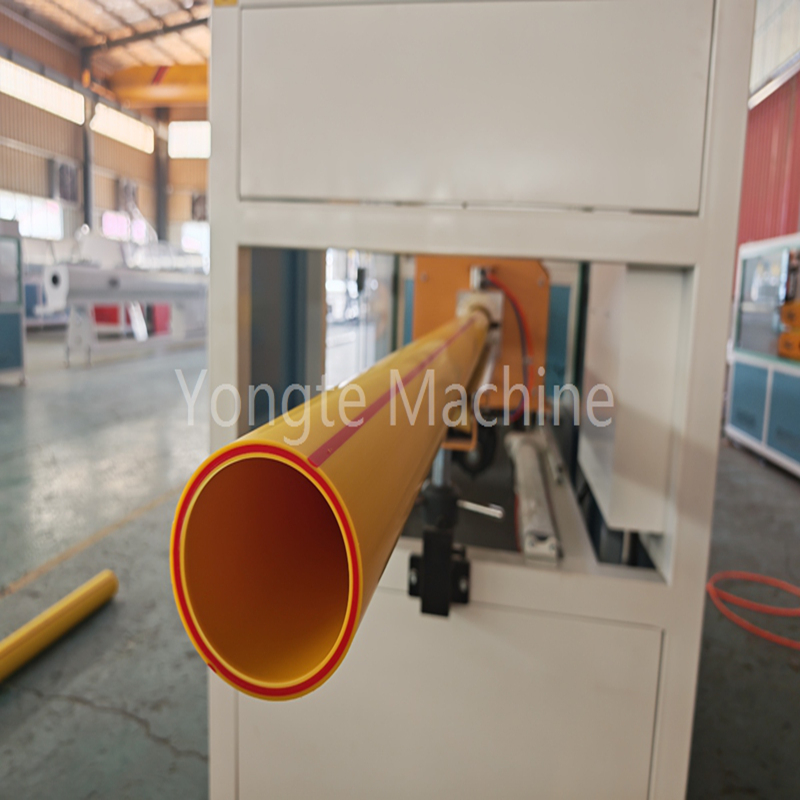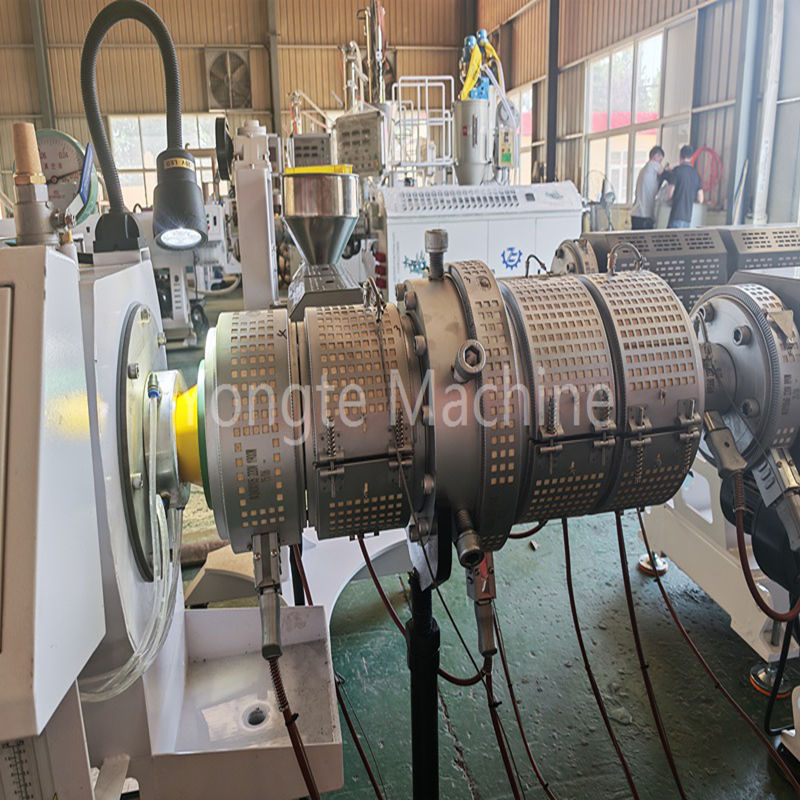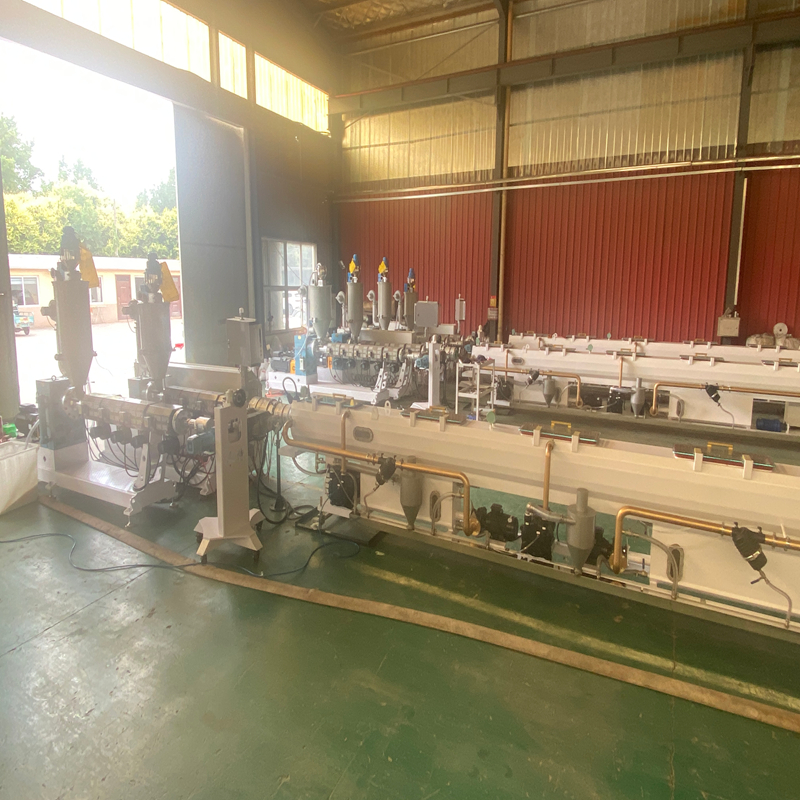Yongte PPR Pipe Production Line Core Component Upgrade: Improved Quality, Stable Prices
Yongte Plastic Machinery announced today the completion of a comprehensive technical upgrade of its core PPR pipe production line components—the mold and screw. This upgrade specifically addresses the characteristics of PPR raw materials (high viscosity and easy degradation) and common industry pain points (uneven wall thickness, poor plasticization, high scrap rates, and insufficient stability). Leveraging extensive customer production data, it has significantly improved pipe quality and production stability. Crucially, the overall price of the production line remains stable. Yongte's "technological benefits" effectively help customers reduce costs and increase efficiency.

Mold Upgrade: Eliminate Uneven Wall Thickness and Appearance Defects
To address pipe wall thickness deviation, surface defects, and cooling issues caused by traditional molds, Yongte has implemented three key improvements:
Runner Structure Innovation: Utilizing professional melt flow simulation software, the mold's annular runner has been optimized to a "gradual, zero-dead-angle" structure. This significantly eliminates variations in melt flow rate, ensures highly uniform wall thickness, and effectively resolves customers' pipe connection difficulties and substandard pressure resistance.
Core Component Enhancement: The die and core rod, the key components of the mold, have been upgraded to more durable H13 hot-work die steel, machined using high-precision five-axis machining, and equipped with a nano-ceramic coating. This significantly extends mold life, reduces melt retention and degradation, and significantly improves the pipe's appearance (no crystals, no scratches, etc.) pass rate.
Precise Cooling and Shaping: The shaping system has been upgraded to a multi-stage, independently temperature-controlled vacuum shaping sleeve. Combined with closed-loop vacuum control, it adjusts water temperature and pressure in real time, effectively eliminating internal stress in the pipe caused by uneven cooling. Customers report reduced cracking and lower after-sales costs.
Screw Upgrade: Optimizes Plasticization and Extrusion Stability
To address uneven plasticization and fluctuating extrusion pressure for PPR raw materials:
Improved Mixing Efficiency: A "barrier-type separation screw" and the addition of a pin-type mixing section ensure full and uniform melting of PPR granules at an optimal temperature, preventing local overheating, improving pipe strength, and addressing embrittlement. The optimized screw channel design allows for smoother material flow, increased extrusion throughput, and higher daily production capacity per line.
Enhanced Wear Resistance and Pressure Control: The screw body is made of high-strength alloy steel and undergoes special treatment, significantly improving wear resistance and effectively resisting abrasion caused by fillers in the PPR raw material. The barrel has been upgraded with multi-stage precision temperature control, coupled with a high-precision pressure sensor in the screw head. This significantly improves extrusion pressure stability, significantly reducing production interruptions, wall thickness fluctuations, and other anomalies.
Reduced Degradation Risk: A special screw groove design reduces shear heating, and an additional vent effectively removes moisture from the raw material. This two-pronged approach prevents degradation and yellowing of the PPR melt, ensuring the long-term heat resistance and reliability of the pipe, meeting engineering-grade requirements.

Confidence in "Upgrade without Price Increase": Internal Optimization to Absorb Costs
Yongte's technical director stated that while the core component upgrade increased per-line costs, this was absorbed internally through three major measures:
Long-term strategic partnerships with major steel suppliers reduced raw material procurement costs;
Upgraded components utilize standardized modular designs, allowing for mass production to dilute costs;
Extended component lifespan, reduced customer scrap rates, and reduced after-sales maintenance costs, forming a closed loop of "technology upgrade → efficiency improvement → cost optimization." "We insist on not requiring customers to pay for technology upgrades. Instead, we optimize our own efficiency, allowing them to obtain better equipment at the original price," emphasized Yongte's Sales Director. Customer calculations show that reducing scrap rates alone can quickly recoup potential cost increases.

Promoting Healthy Industry Development
Faced with the industry's dilemma of "improving quality" while "controlling costs," Yongte is combining "deepening technology" with "sharing customer benefits." This approach improves quality, efficiency, and stability while maintaining affordable pricing. This not only provides customers with effective solutions but also promotes a healthy transformation of the PPR pipe industry from "low-price competition" to "quality competition." Going forward, Yongte will continue to focus on deepening technologies such as intelligent control (such as AI early warning systems) and energy conservation and consumption reduction to empower the industry's high-quality development.